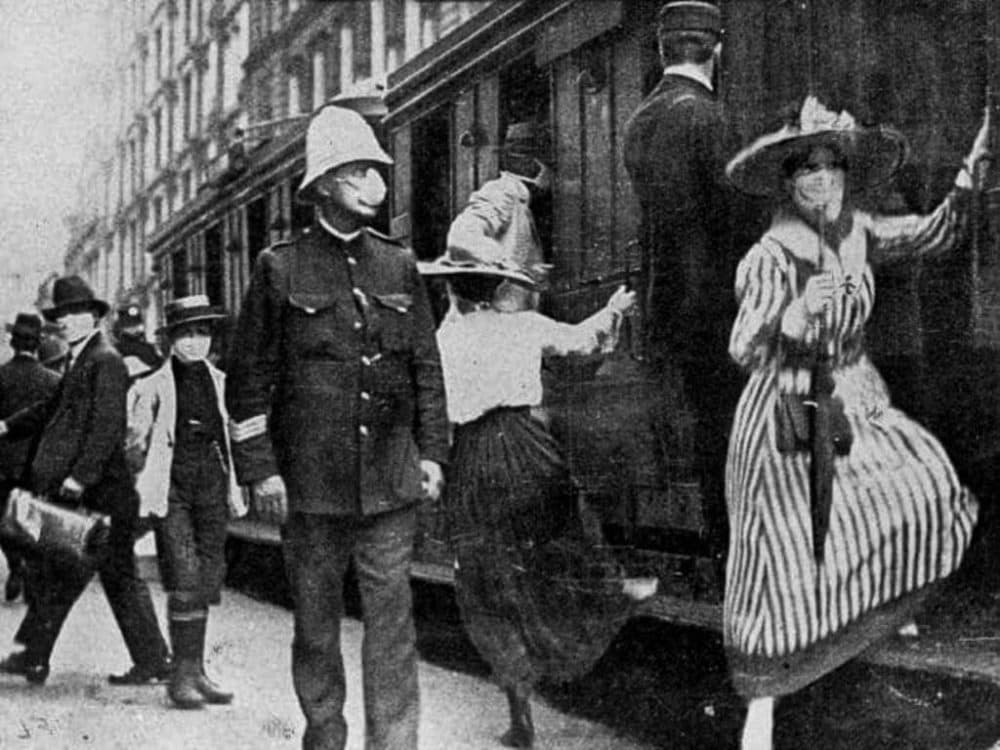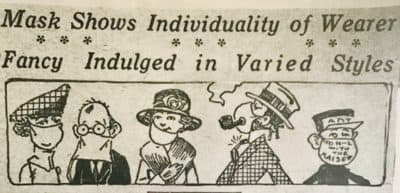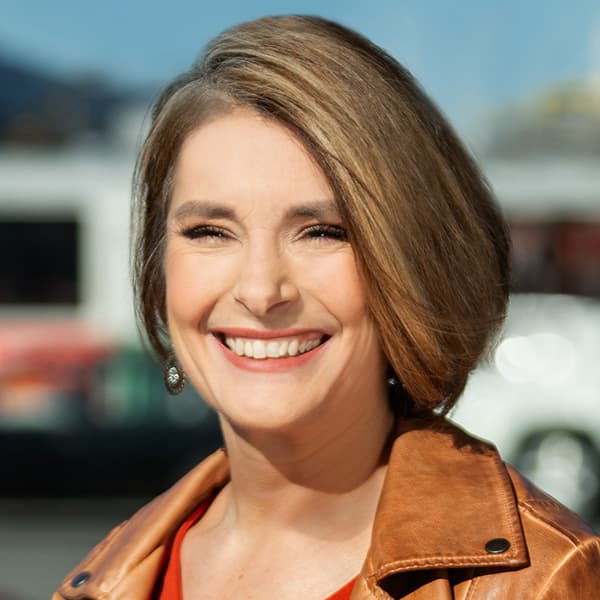Advertisement
Rethinking Fashion In The Midst Of A Pandemic
ResumeThe pandemic has changed the rhythm of our daily lives, including our wardrobes. Face coverings are everywhere, sweatpants are the new chinos, and women have mostly abandoned their high heels and hair highlights.
Erin Robertson, a Boston-based fashion designer and the winner of Project Runway season 15, said that while people may be gravitating towards more comfortable clothing while stuck at home, she believes this is also a time of experimentation.
"I think a lot of people are afraid to try a color, or afraid to try maybe a different shape on their body, or maybe be a little bit more feminine or masculine, or try a new trend ...I think that now you kind of have this time to try it out," Robertson said.
Robertson has been designing masks for essential workers and the homeless but has also found a new stride designing creative, fashionable face masks.
Kimberly Alexander, a professor of museum studies, material culture and American history at the University of New Hampshire, told Radio Boston that Robertson's efforts to elevate the face mask harken back to the influenza pandemic of 1918.
Radio Boston spoke with them on face masks and fashion during the pandemic. The following excerpts have been lightly edited for clarity.
Interview Highlights
On how Robertson defines fashion at a time when most people are stuck at home:
Robertson: My idea of fashion is that it's an extended phenotype of our identities. So I think that what I'm really noticing is... there's this super comfort of "I'm buying sweat pants, leggings, like to the tenth degree," [but] what I get really excited about is that this is also a great opportunity to sort of push the boundaries of the way that you see yourself ... I think that now you have this time to try it out, maybe in the comfort of your own home, maybe post it on Instagram or TikTok and see how it works rather than going out and being vulnerable.
On Robertson's transition to designing more creative, more unique masks:
Robertson: Over the past few weeks, I've been developing sort of like this identity with masks because before I wasn't making masks. I've created this mask that has a bow — so you tie it behind and wrap it around a bun. It's just super feminine and a way to be again playful. Then I have art masks where I've reached out to a couple of local artists ... and I got their art printed on fabric and made them like a little bit cheaper. Some of the proceeds go to the artists to support them during this time. But, then also the person who buys it, they can feel super unique with this custom fabric.

Stylish woman on streetcar, from the newspaper "The Australian" in 1919. (Courtesy Kimberly Alexander) On how more creative face masks harken back to the 1918 pandemic:
Alexander: One of the things that strike me [is that] we don't tend to think of a lot of perhaps creativity and mask making when you look back at the photos that we have of 1918. But, if you start looking at some of the drawings in people's diaries and journals, even announcements from different newspapers, there's a real focus on individuality, on people picking masks that were part of their persona.
On Alexander's favorite examples of ways that masks-wearers in 1918 got creative:
Alexander: I've been looking a lot at the way women used veils, both in a sort of social distancing way about the flu influenza, but also maybe about unwanted gazes from onlookers when you're out and about more ... or the gentleman who designed his mask theoretically with a hole for the cigar he can't stop smoking.
I came across this image of the mask, again as a cartoon, but what it says is "To Hell With The Kaiser." Right on the mask. Again, it's that projection of self in a way that I think in 1918 we would not necessarily have expected.

Clipping from a "The Seattle Clarion Ledger" 1918 article that opens with “Styles of wearing influenza masks today are many and weird.” (Courtesy Kimberly Alexander). While many people are dressing for comfort, Robertson believes people will still value more formal clothing or more fashionable outfits during and after the pandemic:
Robertson: I love dressing up because I love being super lazy and wearing a double XL t-shirt and sneakers. But then I also love to just be ridiculous and put on makeup because it kind of builds self-esteem and makes you feel good about yourself. I've always dressed for myself anyway, so I feel like, at least for me, I'm kind of hoping that people start realizing that the reason to dress up and to put on makeup and to find cute clothes is really for yourself. It's never been for anyone else.
On how an economic downturn might impact the fashion people can afford:
Alexander: I think that one of the things that we've all always done and probably we'll see more of is using vintage, using second hand [clothing]. Even some of the big companies now have an entire site, part of their site where you can buy vintage.
Robertson: My thing is I really hope people get more excited about making more things and get inspired to create their own stuff.
This segment aired on May 13, 2020.

